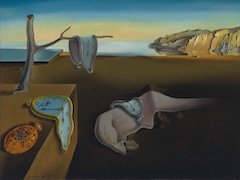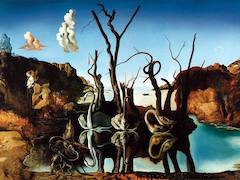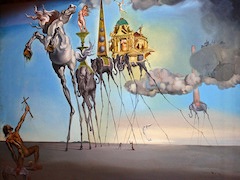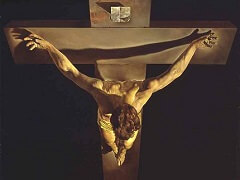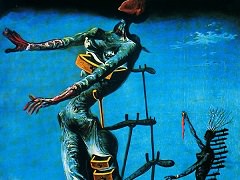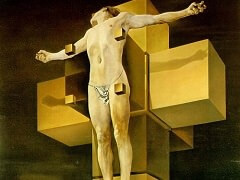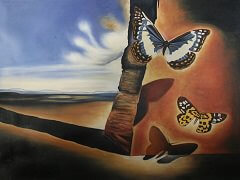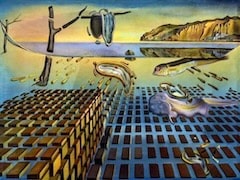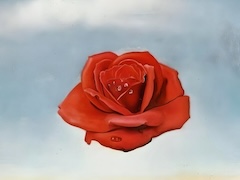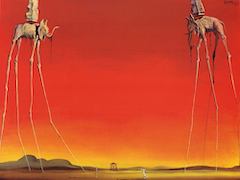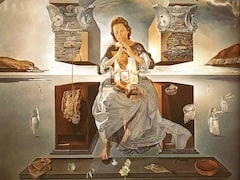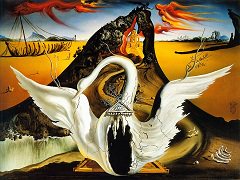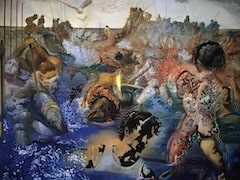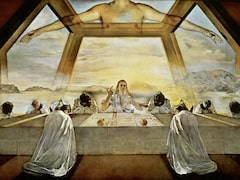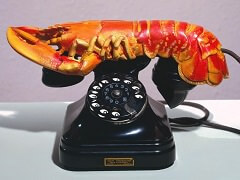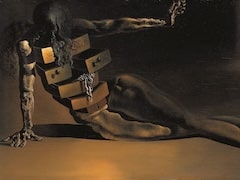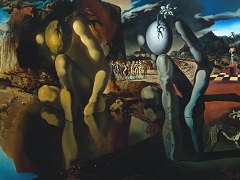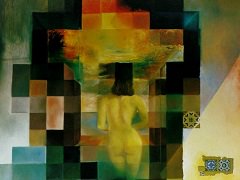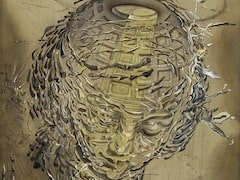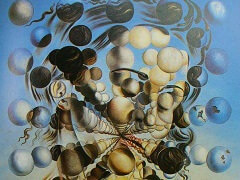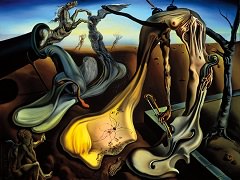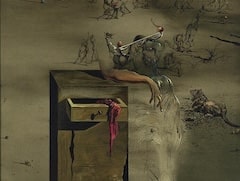Honey is Sweeter than Blood, 1927 by Salvador Dali
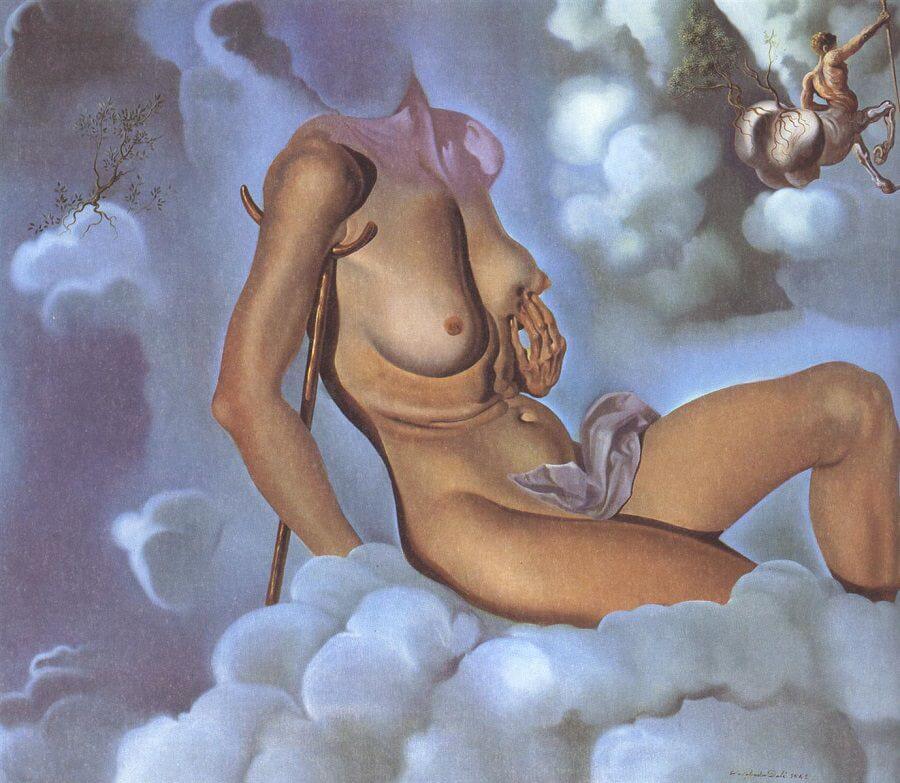
Dali's first surreal painting, Honey is Sweeter than Blood, shows a marked progression away from Cubism toward the depiction of subconscious obsessions. Dali's preoccupations with decadence, death, and immortality returned repeatedly in future works. This painting was made between Dali's first visits to Paris where he was socializing with artists who would found the Surrealist movement.
Honey is Sweeter than Blood was made at a time, when the twenty-three-year-old Dali, having already worked through the influence of Picasso and De Chirico, was now enthralled with the creative and poetic potential offered by Surrealism, especially automatism, and was fast assimilating the influences of the movement's painters; Joan Miro, Max Ernst and Tanguy. Honey is Sweeter than Blood and another work about the same time, Apparatus and Hand, owed most to this new combination of influences - were the two paintings he chose to represent his new direction at the 1927 Autumn Salon in Barcelona where their bizarre and disturbing imagery duly caused a scandal.
In a defensive article that Dali wrote at this time published in the October issue of L'Amic de les Arts, he acknowledged the role of the subconscious on his work and admitted admiring the work of Miro and Tanguy. He wrote that he had indeed been experimenting with an automatism in the creation of these works, but nevertheless sought to assert his distance at this time from Surrealism.

